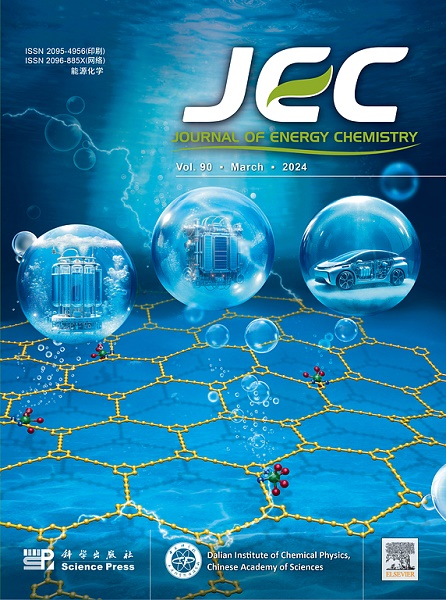Recent advances in two-electron oxygen reduction catalysts for electro-Fenton technology
IF 13.1
1区 化学
Q1 Energy
引用次数: 0
Abstract
The oxygen reduction reaction (ORR) holds significant potential for various energy conversion and utilization technologies. In particular, the two-electron (2e−) ORR process for the electro-synthesis of hydrogen peroxide (H2O2) facilitates the continuous production of this compound. Recently, the application of 2e− ORR in electro-Fenton (EF) technology has garnered substantial attention within the wastewater treatment sector. Despite substantial advancements, challenges remain regarding the activity and stability of oxygen reduction catalysts, as well as the specific reaction conditions, which continue to limit the degradation efficiency of EF technology. Therefore, it is essential to examine the progress in research on 2e− oxygen reduction catalysts and the optimization of EF reaction conditions. This review begins by summarizing the fundamental principles of ORR and EF technologies. It discusses the regulatory strategies for carbon-based and transition metal-based catalysts aimed at improving the yield and selectivity of H2O2. Additionally, the optimization methods for EF reaction conditions are outlined, focusing on promoting the regeneration of Fe2+ and broadening the operational pH range. The review further elaborates on novel coupling technologies. Finally, it envisions future research prospects to enhance the practicality and feasibility of EF technology in wastewater treatment.

求助全文
约1分钟内获得全文
求助全文
来源期刊

Journal of Energy Chemistry
CHEMISTRY, APPLIED-CHEMISTRY, PHYSICAL
CiteScore
19.10
自引率
8.40%
发文量
3631
审稿时长
15 days
期刊介绍:
The Journal of Energy Chemistry, the official publication of Science Press and the Dalian Institute of Chemical Physics, Chinese Academy of Sciences, serves as a platform for reporting creative research and innovative applications in energy chemistry. It mainly reports on creative researches and innovative applications of chemical conversions of fossil energy, carbon dioxide, electrochemical energy and hydrogen energy, as well as the conversions of biomass and solar energy related with chemical issues to promote academic exchanges in the field of energy chemistry and to accelerate the exploration, research and development of energy science and technologies.
This journal focuses on original research papers covering various topics within energy chemistry worldwide, including:
Optimized utilization of fossil energy
Hydrogen energy
Conversion and storage of electrochemical energy
Capture, storage, and chemical conversion of carbon dioxide
Materials and nanotechnologies for energy conversion and storage
Chemistry in biomass conversion
Chemistry in the utilization of solar energy
 求助内容:
求助内容: 应助结果提醒方式:
应助结果提醒方式:


